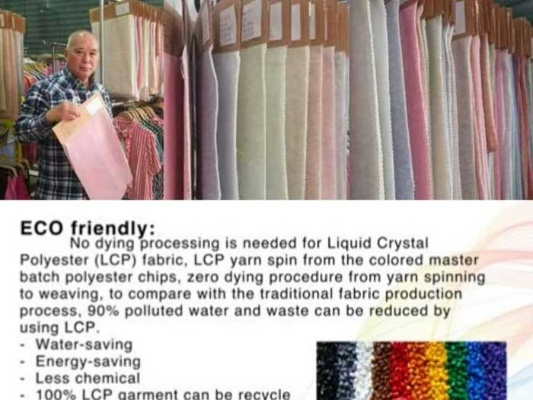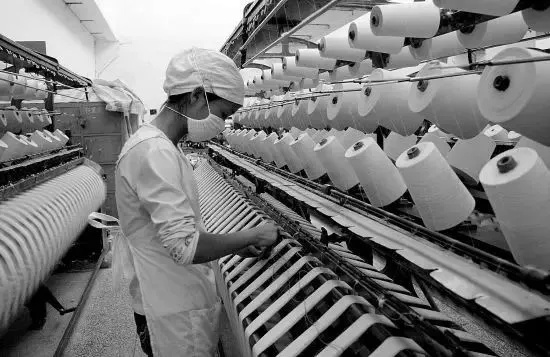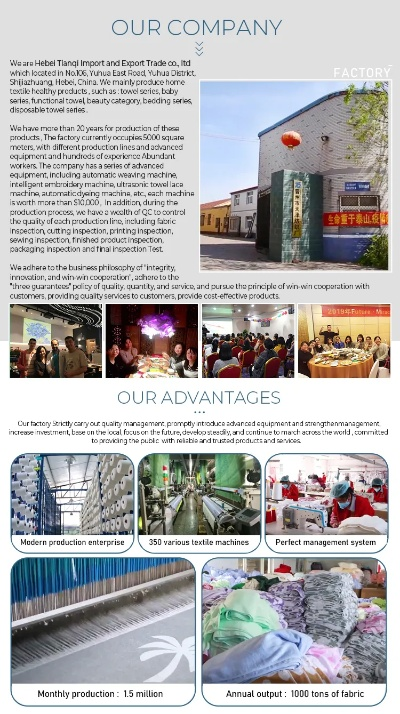The Future of Antimicrobial Textiles:A Comprehensive Overview
Antimicrobial textiles have emerged as a promising solution to the growing issue of antibiotic resistance, which threatens public health worldwide. This paper provides an overview of the future developments in this field, highlighting the potential applications of antimicrobial materials in healthcare, sportswear, and other areas. The study explores the current state of antimicrobial technology, including the use of natural and synthetic fibers, coatings, and nanoparticles, as well as their efficacy against various bacteria and fungi. Additionally, it discusses the challenges and opportunities associated with the development of antimicrobial textiles, including cost-effective production methods, scalability, and consumer acceptance. Finally, the paper proposes a roadmap for future research and innovation in this field, emphasizing the need for collaboration between industry, academia, and government to address the pressing global challenge of antibiotic resistance.
Introduction: In the realm of textiles, the concept of antimicrobial properties has been gaining significant traction in recent years. As our understanding of microbial resistance continues to evolve, the need for effective and sustainable antimicrobial solutions is more pressing than ever before. In this essay, we will explore the current state of antimicrobial textiles, their applications, benefits, and challenges. By providing a comprehensive overview, we aim to shed light on the future of these innovative materials and how they can revolutionize the fashion industry.
Antimicrobial Textiles: What Are They? Antimicrobial textiles are fabrics that possess the ability to inhibit or kill harmful bacteria, viruses, and fungi. These materials are designed to protect against infections caused by pathogens such as MRSA, E. coli, and Staphylococcus aureus. Antimicrobial textiles can be found in a wide range of applications, including healthcare, sportswear, home furnishings, and even clothing.
Applications: One of the most common uses of antimicrobial textiles is in healthcare settings. These materials can be used to create surgical gowns, hospital bedspreads, and patient gowns that prevent cross-infection. Additionally, they can be incorporated into sportswear to reduce the risk of infection during physical activities. In the home, antimicrobial textiles can be used to create bedding, curtains, and upholstery to improve indoor air quality and reduce the spread of germs.

Benefits: The main benefit of antimicrobial textiles is their ability to prevent infections. By reducing the number of bacteria and viruses present in the environment, these materials help to prevent the spread of diseases and promote healthier living conditions. Additionally, antimicrobial textiles can have a positive impact on public health by reducing the prevalence of infectious diseases in communities.
Challenges: Despite their many benefits, there are still several challenges associated with the use of antimicrobial textiles. One of the main concerns is the potential for resistance development. If bacteria become resistant to the antimicrobial agents used in these materials, it could lead to a decrease in their effectiveness. Additionally, some consumers may be hesitant to use antimicrobial textiles due to concerns about the long-term safety and environmental impact of these materials.
Case Study: One example of the successful application of antimicrobial textiles is the use of silver nanoparticles in sportswear. Researchers at the University of California, Los Angeles (UCLA) developed a silver-based textile that was able to inhibit the growth of bacteria on the surface of sportswear. This material was tested on volunteers who were exposed to various types of bacteria, including E. coli and Staphylococcus aureus. The results showed that the silver-based textile significantly reduced the number of bacteria on the wearer's skin compared to traditional cotton sportswear.
Conclusion: In conclusion, antimicrobial textiles represent a promising solution to the growing problem of infections caused by harmful bacteria and viruses. By harnessing the power of science and technology, we can create innovative materials that not only protect individuals but also contribute to a healthier and safer world. As we continue to explore the potential of antimicrobial textiles, it is essential to consider the challenges and limitations associated with their use while also embracing the opportunities that lie ahead.
随着人们对健康生活的追求日益增强,抗菌纺织品成为了市场上的热门话题,中科科优抗菌纺织品以其出色的抗菌性能和优质品质,赢得了消费者的广泛认可,本文将围绕中科科优抗菌纺织品展开讨论,并通过英文案例说明来进一步阐述其优势。
中科科优抗菌纺织品的特点
- 高效抗菌性能:中科科优抗菌纺织品采用先进的抗菌技术,能够有效杀灭细菌、病毒等微生物,减少细菌滋生,保持衣物清洁卫生。
- 环保可持续:中科科优抗菌纺织品注重环保可持续性,采用天然纤维和环保染料,无毒无害,符合现代人对绿色生活的追求。
- 多功能应用:中科科优抗菌纺织品不仅适用于衣物,还可应用于床单、毛巾、鞋袜等日常用品,满足不同人群的需求。
中科科优抗菌纺织品的应用案例
家居用品 中科科优抗菌纺织品在家居领域的应用非常广泛,某品牌推出的抗菌床单,采用独特的纤维材料和抗菌技术,能够有效杀灭细菌,保持床单清洁卫生,深受消费者喜爱,该品牌还推出了抗菌毛巾、抗菌拖鞋等家居用品,满足了不同人群对健康生活的需求。

医疗用品 在中科科优抗菌纺织品的应用中,也涉及到了医疗领域,医院使用的手术衣、口罩等医疗用品,采用了中科科优抗菌纺织品制作而成,能够有效杀灭细菌,保障医护人员和患者的健康,中科科优抗菌纺织品还广泛应用于医疗器械、个人卫生用品等领域。
英文案例说明
以下是一个英文案例说明:
Case Study: Zhongke Kewell Antimicrobial Textiles
-
产品介绍:中科科优抗菌纺织品是一种高效抗菌、环保可持续的纺织品,适用于衣物、床单、毛巾、鞋袜等日常用品,该产品采用了先进的抗菌技术,能够有效杀灭细菌、病毒等微生物,保持衣物清洁卫生。
-
应用领域:中科科优抗菌纺织品在多个领域都有广泛应用,在家居领域,该产品被广泛应用于抗菌床单、毛巾等床上用品;在医疗领域,该产品被广泛应用于手术衣、口罩等医疗用品;在公共场所,该产品也被广泛应用于公共设施的清洁卫生等方面。
-
产品优势:中科科优抗菌纺织品具有以下优势:其高效抗菌性能能够有效地杀灭细菌、病毒等微生物,减少细菌滋生;其环保可持续性符合现代人对绿色生活的追求;其多样化的应用领域使其成为了一种具有广泛适用性的产品。
中科科优抗菌纺织品以其高效抗菌性能、环保可持续性和多样化应用领域等特点,赢得了消费者的广泛认可,随着人们对健康生活的需求不断增加,中科科优抗菌纺织品有望成为一种更加普及的纺织品产品。
Articles related to the knowledge points of this article:
The Story of Double Connect Textiles:A Multinational Textile Company



